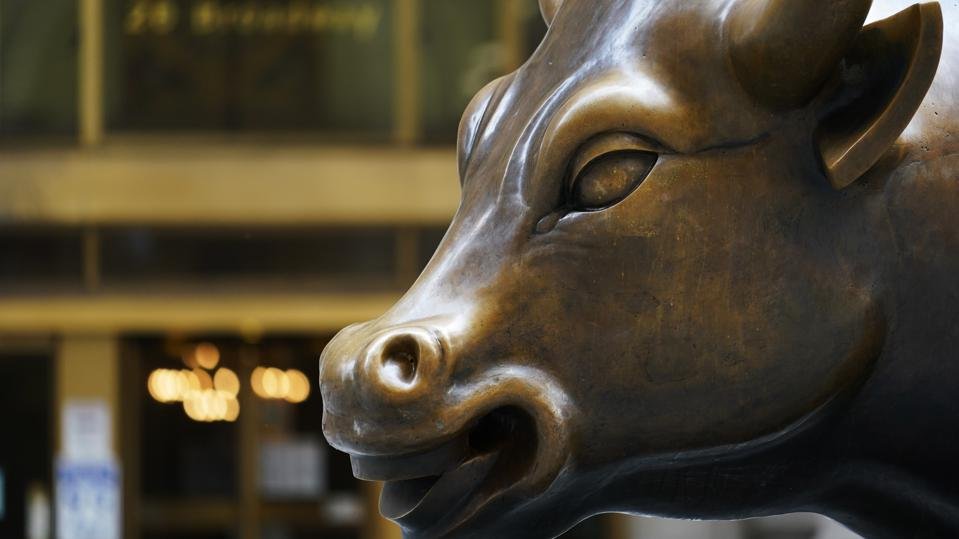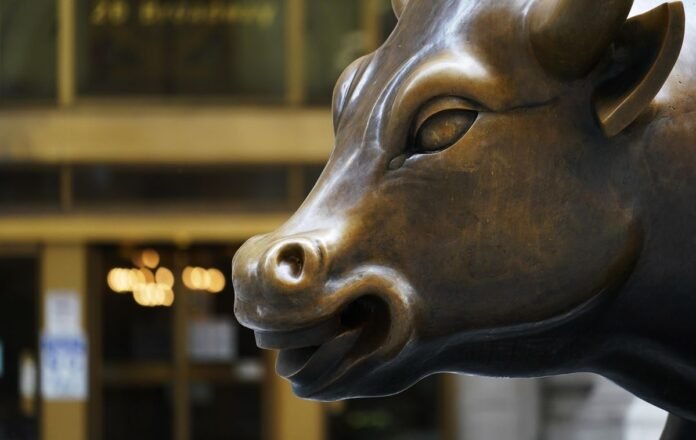Topline
As early indicators point to a strong recovery that will create a “supercharged” economy once the coronavirus crisis slows down, Moody’s Analytics chief economist Mark Zandi says that the biggest risk to that recovery isn’t the runaway inflation that has many experts sounding alarm bells but a dangerous surge in asset values.

The Charging Bull statue is shown in New York’s financial district, Tuesday, Sept. 8, 2020.
Key Facts
Rising vaccination rates and falling hospitalizations, plus the fact that herd immunity looks likely by the summer months, are just a few of the “increasingly compelling reasons” to be optimistic about recovery in the months ahead, Zandi wrote in a Monday research note.
In addition, federal stimulus spending is beginning to make its way to households that need assistance, households with excess personal savings and lots of pent-up demand from the pandemic are ready to spend, and business-to-business spending is on the rise too.
Some economists, lawmakers, and market experts are worried that the unprecedented federal stimulus and the surge in consumer spending that follows it will push prices to historic levels, devalue the dollar and destabilize the broader U.S. economy.
Zandi says these concerns about rampant, uncontrollable inflation are “much too premature,” especially since it will be years before the U.S. reaches pre-pandemic employment levels.
Rather, the bigger and more pressing threat to the recovery is ballooning asset prices, he says, pointing to recent surges in the equities market, housing market, bond market, commodities market, and even the cryptocurrency market.
With valuations sky high, these markets could be vulnerable to major corrections and crashes that have the potential to reverberate through the entire economy.
Surprising Fact
The S&P 500 index has soared almost 300% over the past ten years—much in the way it did in the ten years preceding the dot-com crash two decades ago.
Big Number
$2.4 trillion. That’s how much “forced” savings—money that households would have otherwise spent but couldn’t because of pandemic restrictions—analysts from Goldman Sachs estimate will be accumulated by the time the economy returns to normal in the middle of the year. “Whether households spend a modest or large share of these pent-up savings as the economy fully reopens could be the difference between a healthy recovery and overheating,” the analysts wrote in a Monday research note.
Key Background
Zandi isn’t the only expert taking this view. In a January speech at Princeton University, Federal Reserve chair Jerome Powell said he expects to see “a strong wave of exuberant spending” once the pandemic subsides that could push prices higher in the short term, but that he is not concerned about overheating and runaway inflation in the long term. Powell noted that there are still too many Americans seeking employment for wages to rise to unhealthy levels any time soon, and emphasized that with interest rates still at rock-bottom, the Fed has an arsenal of tools at its disposal to address rising inflation if it becomes problematic.
Further Reading
Is The Stock Market About To Crash? (Forbes)
Here’s Where $1,400 Stimulus Checks, $15 Minimum Wage And The Rest Of Biden’s $1.9 Trillion Rescue Plan Stand Today (Forbes)
Here’s What Biden’s $2 Trillion Climate-Focused Infrastructure Plan Means For Stocks And The Economy (Forbes)
Here’s What Could Spark The Next 10% Market Correction, Bank Of America Warns (Forbes)























